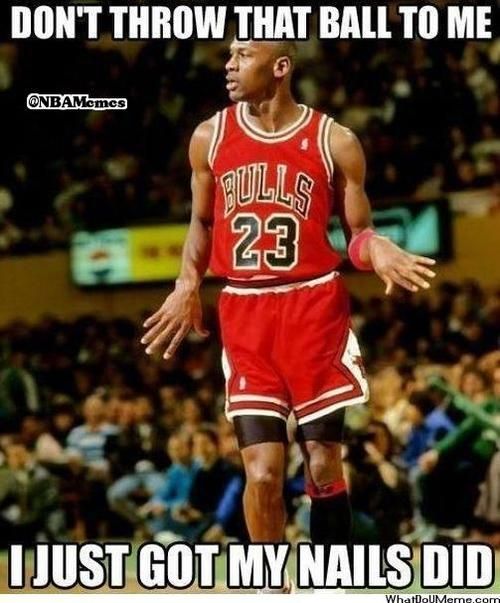How to Measure Sports Sponsorship ROI

The sports sponsorship game is booming, with projections suggesting the global market will more than double to $175.8 billion by 2034, growing nearly 9% annually from its current $76.3 billion valuation. This growth is driven by the unique ability of sports to capture live, captive audiences in our increasingly fragmented digital world.
Despite economic uncertainty, 39% of CMOs plan to increase their investment in sports sponsorships in 2025, while 28% are entering the space for the first time. Big players like McLaren and Bayern Munich have secured massive sponsorship deals, showing just how attractive sports are to major brands.
But there’s a problem.
A whopping 76% of marketers are struggling to calculate the return on investment from their sports sponsorships.
It’s like they’re throwing money into a black hole and hoping for the best.
And honestly, I get it. How do you measure the ROI of seeing your logo on an F1 car? Or having your brand name shouted by thousands of fans at a stadium?
So let’s dig into why measuring sports sponsorship ROI is so damn hard, and what brands can do about it.
The Big Sports Sponsorship ROI Problem
The “Fuzzy” ROI Challenge

The difficulty in measuring ROI stems from the intangible benefits of sports sponsorships:
- Brand building
- Emotional connections
- Customer engagement
- Cultural relevance
While these elements contribute to long-term brand success, they’re much harder to quantify compared to traditional marketing metrics like click-through rates and conversions.
Think about it – when Nike sponsors an athlete, are they expecting an immediate sales boost? Or are they building a brand association that pays dividends for decades?
Most marketers rely on brand visibility and media impressions rather than direct sales attribution. It’s like counting how many people saw your billboard instead of tracking how many actually bought something because of it.
Why Most Brands Are Doing It Wrong
The typical approach goes something like this:
- Spend millions on rights fees
- Slap logos everywhere
- Count impressions
- ???
- Profit!
But here’s the truth: visibility doesn’t equal value.
Just because 100 million people saw your logo during the Super Bowl doesn’t mean they care about your product. Or even remember it the next day.
And that’s why so many CMOs are scratching their heads trying to justify their sports sponsorship budgets to the CFO.
Strategies to Actually Measure Sports Sponsorship ROI

Go Beyond Basic Metrics
To effectively measure ROI, brands need to move beyond traditional metrics like logo visibility and media impressions. Here are some better approaches:
Brand Lift Studies: Conduct research to quantify how sponsorships impact brand perception and preference. Brand lift studies can show you if your target audience actually thinks better of you after seeing your sponsorship.
Hardcore ROI Metrics: Implement ROI metrics that directly tie sponsorship spend to incremental sales or revenue growth. This might involve using data analytics platforms to track customer journey touchpoints and attribution modeling.
Real-Time Tracking: Use real-time tracking tools to provide immediate insights into sponsorship performance, allowing for quick adjustments to maximize ROI.
Data Collaboration: Leverage data collaboration tools to better understand your audience and optimize sponsorship activations. This approach ensures that both brands and rights holders benefit from the partnership.
Know Who You’re Trying to Reach
Understanding your target audience is crucial for maximizing sports sponsorship effectiveness.
Different demographics have unique preferences for sports and media consumption:
Generation Z: These folks are particularly interested in emerging sports like car racing and esports, and they engage with platforms like TikTok and YouTube.
Millennials: They love experiences and storytelling around sports, not just the game itself.
Demographic Preferences: Younger generations tend to over-index on emerging sports, while older demographics prefer traditional sports like baseball.
So if you’re sponsoring MLB when your target audience is on Twitch watching esports… you might be throwing money away.
Activation Is Everything
Here’s a secret that successful sports sponsors know: rights fees are just the beginning.
Research indicates that spending at least 50 cents on activation for every dollar invested in sponsorship rights can significantly enhance ROI. Effective activations can literally double your return on investment.
What do I mean by activation?
- Social media campaigns tied to the sponsorship
- On-site experiences at sporting events
- Content creation featuring athletes
- Product integrations into the sport experience
Think of it this way: buying sponsorship rights is like buying a plot of land. But you still need to build a house on it for it to have any value.
How to Get More From Your Sports Sponsorships

Focus, Don’t Spread Thin
Brands should focus on one key passion point or vertical rather than spreading resources thinly across multiple areas. This focused approach allows for more authentic storytelling and better resource allocation.
It’s better to be the dominant sponsor in one sport than a forgettable logo in ten different ones.
Consider the Internal ROI
Beyond external metrics, brands should consider the internal benefits of sponsorships:
- Employee engagement and pride
- Cultural alignment
- Recruitment tool
- Executive entertainment opportunities
These internal benefits can be substantial and help justify investments. When employees feel proud to work for a brand that sponsors their favorite team, that translates to retention and productivity.
Test, Learn, Optimize
Sports sponsorship isn’t a “set it and forget it” marketing tactic. The most successful brands treat it like any other channel:
- Start small
- Measure results
- Double down on what works
- Cut what doesn’t
Sports analytics platforms now give brands unprecedented ability to measure engagement and impact in real-time.
The Future of Sports Sponsorship ROI
As the sports sponsorship landscape evolves, brands will need to adapt their strategies. Here’s what’s coming:
Emerging Sports: Leagues like the WNBA and esports are gaining traction, offering brands new opportunities to reach diverse audiences.
Data-Driven Approaches: Advanced analytics and machine learning will become more prevalent, enabling brands to measure ROI more accurately.
Gen Z Engagement: As Gen Z becomes a more significant demographic, brands will need to tailor their sponsorship strategies to appeal to this generation’s preferences for authenticity and purpose.
Digital Integration: The line between physical and digital sports experiences is blurring, creating new sponsorship opportunities in virtual worlds and augmented reality.
In Summary

While measuring sports sponsorship ROI remains challenging, it’s not impossible. The future offers immense opportunities for brands willing to innovate and adapt.
By focusing on data-driven strategies, targeted activations, and a holistic view of sponsorship benefits, brands can unlock the full potential of sports sponsorships and drive tangible returns.
So next time your company is considering throwing millions at a sports sponsorship, remember: the jersey patch or stadium name is just the beginning. The real work—and the real returns—come from what you do with that opportunity.
And for the love of everything, please measure more than just impressions. Your CFO (and your career) will thank you.

